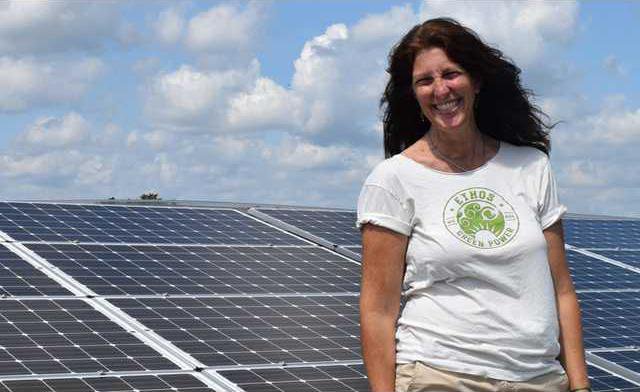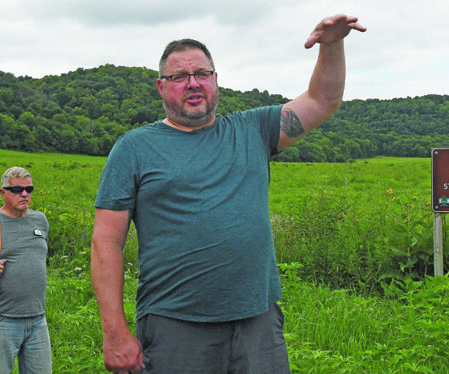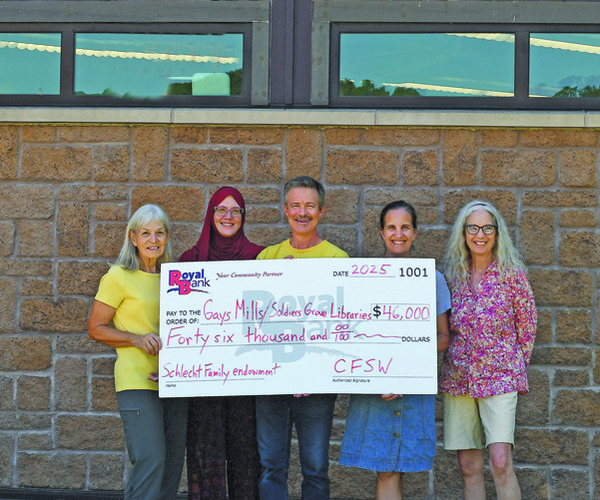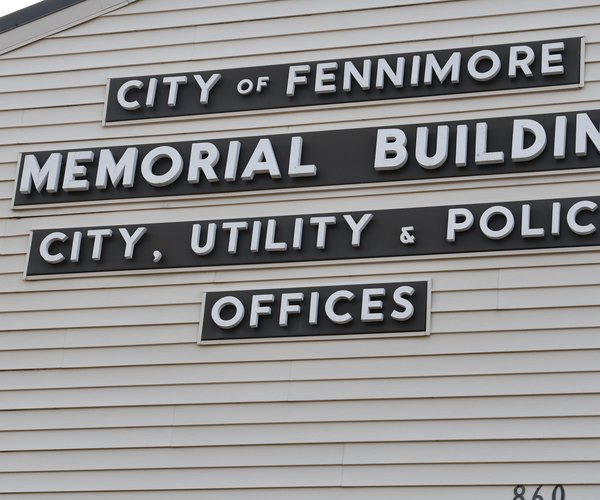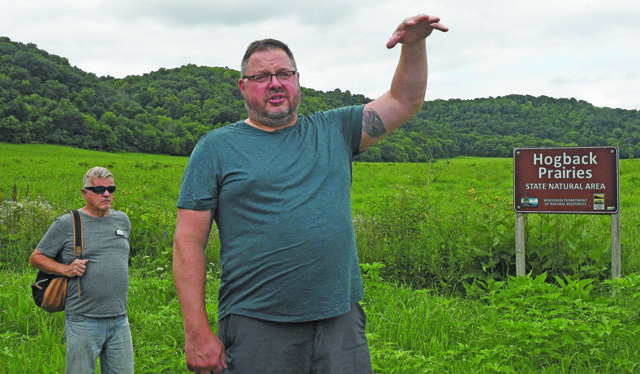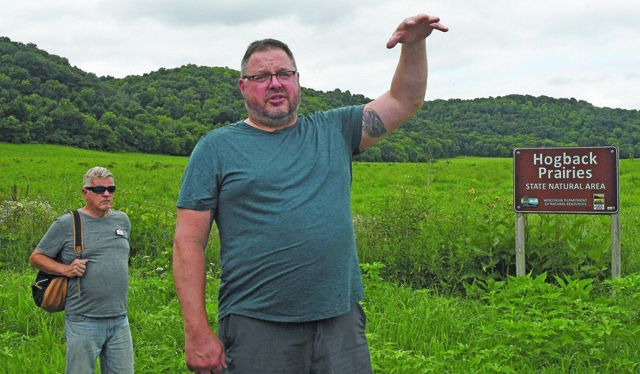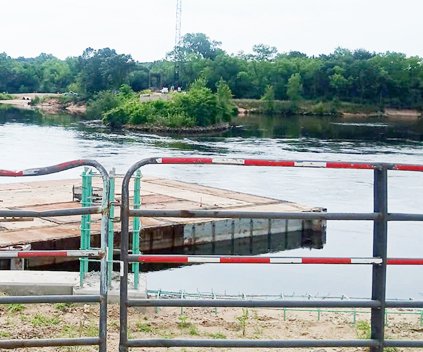VIROQUA - Alicia Leinberger is the owner of an innovative Viroqua business, Ethos Green Power. She has worked in cutting-edge innovation in both the renewable energy and fair trade sectors of the economy for most of her adult life, and ran for the Wisconsin State Assembly’s 96th District in 2016.
Ethos Green Power is a regional expert in solar design and installation. Leinberger established the company in 2013 with the objective of creating an independent green power economy that results in energy self-reliance.
Leinberger has worked in renewable energy since 2002 and created Ethos to meet the demands of a changing world. Ethos organizes stakeholders who want to buy renewable energy and those who want to build renewable systems into a market that grows the total amount of green energy.
Before moving to Viroqua in 2007 so her two children, Zirelia, 13, and Maiela, 14, could attend the Pleasant Ridge Waldorf School, Leinberger lived and worked in Madison.
For many years prior to having her children, Leinberger worked for a company called Equal Exchange, a well-known supplier of fair trade coffee. The business focused on ensuring that the small, independent, coffee producers from whom they sourced their beans were paid a fair price for their product.
Leinberger, initially a volunteer, eventually worked in sales and marketing with Equal Exchange, and founded a small cooperative coffee house on State Street in Madison called Café Assisi.
She and a business partner, an electrical engineer who specializes in renewable power, created a non-profit company called Seventh Generation Energy.
The company was a $4-million-per-year concern with 25 employees, and was a key partner in development of the Focus on Energy program in the state. The business ceased operations in 2012.
Big shift in 2010
“In 2010, with a big shift in the political climate at the state level in Madison, we lost a lot of the state funding along with tax credits for small wind power,” Leinberger said. “This took a chunk out of our business, and the political shift really changed the direction of the Public Service Commission and the Focus on Energy program as well.”
When Leinberger first founded Ethos in 2013, the business’ focus was the on renewable energy credit markets. It was not her intention to run a business focused on solar installations. Over time more and more people and businesses began to approach her about helping them transition to solar energy.
“I decided at some point that I didn’t want to be a day trader,” Leinberger remembered. “So, I took the plunge, working with my former business partner from Madison and other solar installers, and launched my current solar installation business.’
Peace Corps and ecology
Leinberger was born in Cedarburg, a north suburb of Milwaukee and home of the Strawberry Festival. Her parents were both public school teachers. Her mother taught eighth grade, and her father taught mathematics and coached basketball.
“The best part of having two teachers for parents is they always had the summers free,” Leinberger remembered. “My Dad worked as a camp counselor for a boys camp near the border with Canada every summer, and so our family spent the whole summer up north on the islands and lake.”
After graduating from Cedarburg High School, Leinberger went off to UW-Madison. She started studying art, but wound up with a degree in ecology. Ever since high school, she had a yen to go into the Peace Corps, and after graduating from college she joined the Peace Corps and went to El Salvador.
“It was a wonderful experience working in El Salvador, learning and teaching people about integrated pest management and soil conservation,” Leinberger said. “At the same time El Salvador was a little bit scary at that time, just after the U.S. had deported the Mara Salvatrucha gang members. There was a lot of violence and a lot of fear.”
Leinberger spent three years in the Peace Corps in El Salvador. The program helped her to pay off her student loans, and so when she returned to the U.S., she was not burdened by student loan debt like so many young folk are today.
Fair trade
Upon returning to the U.S., Leinberger became more and more interested in the fair trade movement based on her experiences in El Salvador. She began to take economics classes at the university, and this was also when she began to volunteer with Equal Exchange.
Beyond Equal Exchange, Leinberger was also involved with other initiatives aiming to guarantee farmers a fair price for their agricultural products. Leinberger worked with the Family Farm Defenders, where she met founder John Kinsman and others.
They spearheaded a fair trade cheese project with Cedar Grove Cheese. The group created a farmer-to-store relationship that cut out the middle man and put more money in farmer’s pockets.
“I would describe myself as a natural entrepreneur,” Leinberger said. “I’ve worn a lot of different hats over the years, and I always gravitate toward the big picture, big vision end of things.”
Solar installations
Ethos Green Power has installed a total of 360 kilowatts (KW) since it began in 2013. They accomplished 15 installs in the summer of 2017 alone, putting in systems generating a total of 115 KW.
“We do most of our work in a 30-60 mile radius of Viroqua, working with a variety of installers,” Leinberger said. “One thing Ethos is particularly known for is standing behind our work.”
Leinberger explained that Ethos will help an individual or business with all of the work to negotiate the interconnection agreement with the relevant local utility. This is the agreement that allows the solar system to be hooked into the electrical grid, selling electricity when the system produces more than they need, and buying it when more electricity is needed than the system is producing.
Ethos will also design and install the system, working with the buyer’s electrical needs and budget, and provides a five-year warranty on the work. But perhaps best of all, they maintain a remote system monitoring feature, which essentially will allow them to know if there’s a problem with one of the systems before even the owners know.
“When the system is first connected, we work with the owner to review their electrical bills.” Leinberger explained. “We help them to make sure that they are receiving the credits they should be, and help to troubleshoot any problems.”
A happy customer
Alan and Laura Buss of rural Readstown are two of Ethos Green Power’s happy and satisfied customers. In September of 2016 they had a 6.6-kilowatt system installed on their rural property by the company. The system runs their house as well as charging their electric car.
Leinberger from Ethos Green Power helped the Busses analyze their electric bills from the preceding year to determine what size system would meet their needs.
“Alicia was very helpful and knowledgeable,” Buss said. “We’ve had the system for a year-and-a-half now, and going in we had to make some guesses. Alicia ensured that we did a good job of projecting our needs, and we are very happy with our system.”
The Busses had their system installed just before the catastrophic flash floods of September 2016 devastated the area.
“It was crazy,” Buss remembered. “They delivered our solar panels to the farm the night before the flood. They were able to get the system all set up, but we had to wait for the power company to come and hook us up to the grid. Before they hooked us up, they had to ‘put Humpty Dumpty back together.’
Adding in the charging of the electric car helps them to use most of the energy that their system generates, which is a good thing because their electric service provider charges more to sell energy than it pays back for people with solar electric systems hooked into the grid.
“The fellow I talked to at Scenic Rivers explained to me that they pay people with solar electric systems the same price for energy that they are charged for it by their provider,” Buss explained. “The difference between what they pay and what they charge just basically reflect their cost in running the business and providing us their excellent services.”
Their electric car’s battery serves as an additional storage receptacle for the solar energy generated. This means that the system is able to avoid having excess energy that they would sell back to Scenic Rivers. They typically only sell back about 1,000 kilowatts per year.
Leinberger explained that the investment in a solar electric system is very cost effective. She said that the panels essentially last forever and are rarely damaged, and the racking is warrantied for 25 years. The most expensive and crucial part of the system is the inverter.
“Alicia was very helpful in discussing what size system we would need, and she told us about a low cost loan program offered by the Westby Cooperative Credit Union called the LEG Up program,” Buss said. “LEG Up came about when Organic Valley and other local businesses contributed to a fund that allows the Credit Union to make low cost loans to help people install renewable energy systems.”
Candidate for Assembly
Leinberger ran against Lee Nerison for the Wisconsin Assembly in the 96th District, which represents Vernon and Crawford counties in 2016. In that race, she took 40 percent of the vote. She is running again, and hopes to face Nerison in the election in November of 2018.
“It was really Bernie Sanders’ presidential campaign that got me excited about running,” Leinberger said. “After the presidential primary where Sanders swept the State of Wisconsin, the Democrats approached me to enter the race and I accepted.’
Leinberger emphasizes that the reason she is running is because she feels strongly that Vernon and Crawford counties need a real voice for our rural values in Madison.
“I want to take the same values that give us strength in our district, the work ethic, care for our neighbors, and our family farming tradition, to the State Capitol,” Leinberger explained. “I learned a lot the last time around, and I know that if we can get in the same room with people and foster meaningful conversations about what we value, we can find our common ground.”
Leinberger said that two things in Lee Nerison’s voting record in the assembly particulary motivated her to run. The first was his vote to deregulate high capacity wells in the state. The second was his vote to undermine the ‘one-member-one-vote’ provisions of Chapter 181, which is the bill that defines the corporate status of the cooperative form of business ownership.
“Before I got involved in this race in 2016, I never thought I would become involved in politics,” Leinberger said. “As a young person, just out of the Peace Corps, I knew I wanted to do something with my life that would help make the world a better place. I thought academia would be too slow, and I had a distrust of politics, which I viewed as being corrupt. This was the reason I decided to try to make a difference by being a business owner.”
But after being inspired by Bernie Sanders and the issues his presidential campaign brought to the forefront of the political dialogue, Leinberger has changed her mind.
“We need people to step up and run for public office,” Leinberger said. “There’s so much we need to get done, and we need good people in our community to take on leadership roles.”

